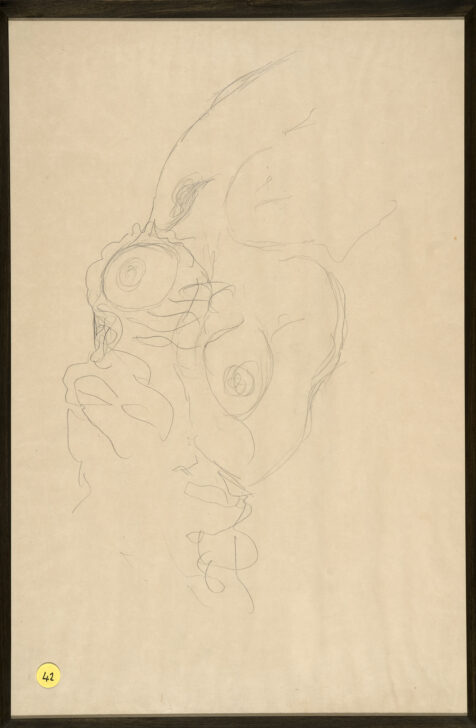Female Torso Reclining
Gustav Klimt

Description
Gustav Klimt
Woman Lying Half Draped
Possible study for The Virgin
1910–20
Graphite on paper
Gift of the Ernst Pulgram and Frances McSparran Collection, 2007/2.88
Female Nude Reclining
Possible study for The Virgin
1910–20
Graphite on paper
Gift of the Ernst Pulgram and Francis McSparran Collection, 2007/2.86
Female Torso Reclining (Half Naked torso)
Study for The Bride
1917/1918
Graphite on paper
Gift of the Ernst Pulgram and Francis McSparran Collection, 2007/2.85
These three drawings display the range of Klimt’s
interest in the female figure and expression, from the gaunt, splayed body of the Female Nude Reclining, to the twisted, voluptuous body wrapped in fabric in Woman Lying Half-Draped. Other studies, such as Half-Naked Torso, ignore facial expressions to focus on the qualities of the female body, using sharp, quick lines to delineate flesh and fabric. Like the drawing for Hope I, these drawings represent the large number of sketches Klimt created in advance of his final paintings. The Virgin (1913) and The Bride (1917–1918), although left unfinished, were among the most important allegorical projects at the end of Klimt’s career. Both works take as their central motif a mass of intertwined women, each woman representing a type and a mood. The large number of preparatory drawings created indicates the importance of these works to Klimt. After completing The Virgin, the artist continued this particular examination of the nude, incorporating them into The Bride, left unfinished at the time of his death.
Usage Rights:
If you are interested in using an image for a publication, please visit https://umma.umich.edu/request-image/ for more information and to fill out the online Image Rights and Reproductions Request Form.